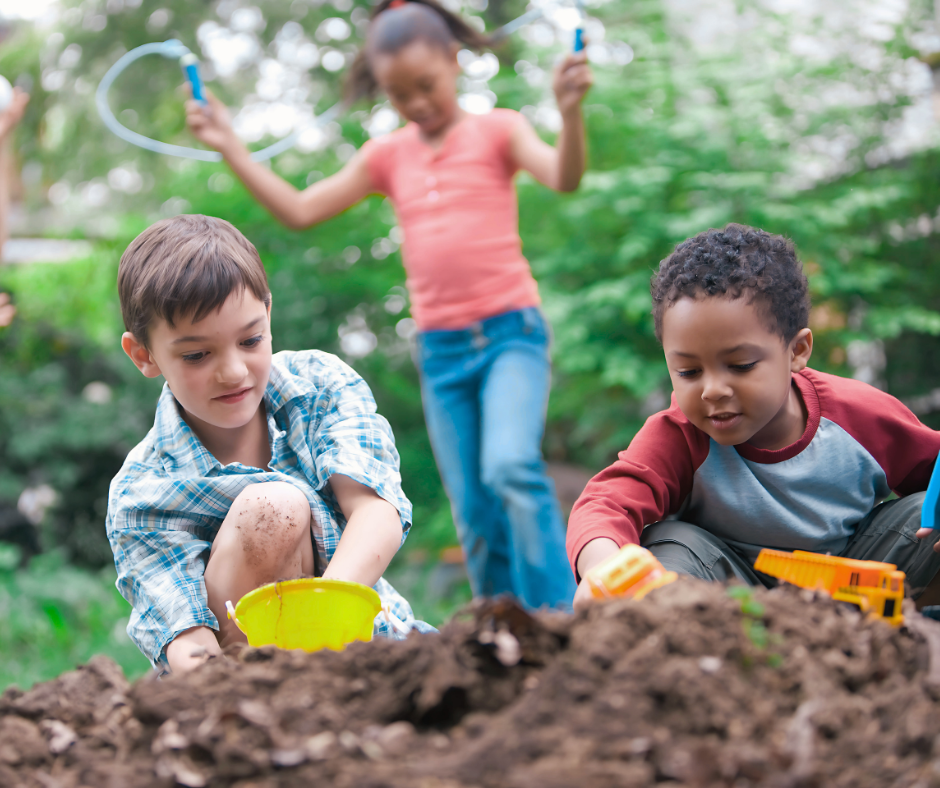Types of Play by Age
Play is vital for children’s healthy development, as it enhances social, cognitive, physical, and emotional skills. Through play, children learn:
Problem-solving
Cause and effect
Creative thinking
Communication
Proprioception
It also promotes fine and gross motor skills. The benefits of play accumulate over time, helping children build upon their abilities. Play allows children to understand the world by reenacting social situations and exploring different roles.
The Stages of Play
Unoccupied play (0–3 months)
Newborns aged 1 to 3 months engage in unoccupied play, which involves observing their environment and making random movements out of curiosity. This type of play, is essential for future development. To foster this type of play, caregivers can:
Place the baby on a playmat
Show colorful images to the baby
Use toys within their line of sight
Talk to them frequently
These interactions will improve babies’ awareness of their surroundings and promote their own interactions with it.
Solitary play (0–2 years)
From birth to approximately two years, children tend to prioritize independent play over social interactions. This focus enables them to explore their surroundings, build self-confidence, and develop essential skills. To foster independent play, consider the following strategies:
Offer a diverse selection of toys, including push toys and stuffed animals
Regularly rotate the toys available so children don’t get bored
Incorporate colorful books into their play space
Ensure they have ample opportunities for safe, free play with their toys. Allow children to play with toys how they wish, letting them explore their surroundings.
Onlooker play (2 years)
At around two years old, toddlers often engage in onlooker play, observing others without participating. While parents may overlook its benefits, experts say it helps build confidence for future interaction. To encourage this play, allow toddlers to watch engaging activities and motivate older siblings to let younger ones observe their play. You can also encourage your child by talking about what they are observing; narrating what other children are doing and asking your child how they would play/what they would do with the toy.
Parallel play (2+ years)
Parallel play is when toddlers play alongside each other without direct interaction, commonly seen in ages 2 to 3. This behavior indicates they are nearing readiness for more social engagement. To encourage parallel play, consider:
Providing a variety of toys and activities (stuffed animals, blocks, sticker books, sandboxes, playdough)
Offering multiples of popular toys to minimize conflicts
Allow children to interact at their own pace as they learn cooperation and social skills.
Associative play (3–4 years)
At ages 3 or 4, children begin to engage more with peers during play while still favoring independent activities. They may interact, such as drawing on the same paper or swapping dress-up clothes, but without a shared goal, making the play less organized. Despite this, associative play is crucial for developing social skills, cooperation, language, problem-solving, and conflict resolution.
To encourage associative play:
Regularly place your child in social settings with peers (daycare, preschool, playdates).
Provide a variety of engaging toys and activities for young children that promote associative play: building blocks, puzzles, dolls/action figures, etc.
Cooperative play (4+ years)
Cooperative play is vital for child development, typically starting around ages four or five. It helps children use verbal communication, teamwork, and sharing while also fostering kindness, empathy, and compromise. Through activities like building or playing games, children work towards shared goals, enhancing their social and emotional growth. To promote cooperative play, you can model cooperative behavior and encourage collaborative activities like raking leaves or building forts.
While parents should encourage play opportunities, it’s important to give children space to learn independently. They naturally discover concepts and skills through play, making the process enjoyable and effective.

